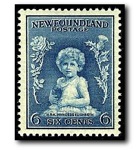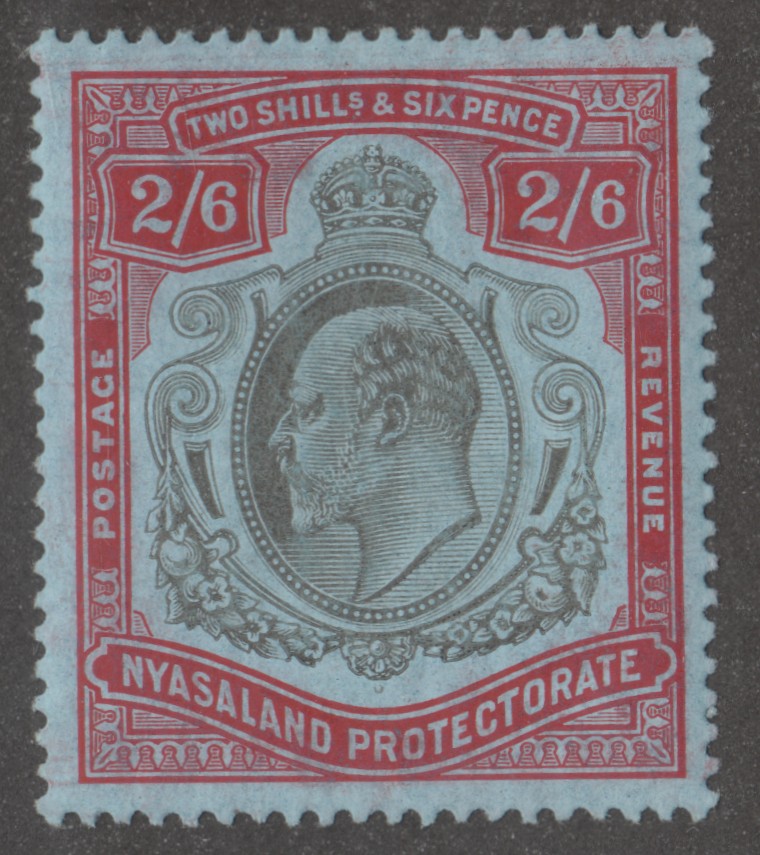
Discussion - Member to Member Sales - Research Center

Discussion - Member to Member Sales - Research Center

All the the stamps in this set were in mounts and all (except this one?) are unused. Some of the others are also without gum. So the fact that the back of this stamp is without gum and clean has little significance in my opinion.
Are these lines a special cancellation of some type?
Thanks.
Tom


Login to Like
this post
Very odd. The distance of the lines would fit ordinary ruled writing paper. But why are they more visible on the front of the stamp?

Login to Like
this post
Because they were dried between two sheets of lined paper?
Cheers,
/s/ ikeyPikey

4 Members
like this post.
Login to Like.
Unless there is some identified reason I would side with ikey pikey. At some point they absorbed ink from lined paper before they were ever placed in mounts. The fact they were soaked unused suggests they were stuck to something in humid conditions in the past and that was likely the source. They might be more visible on the front if the original gum partially or completely blocked the ink on the back resulting in ink being absorbed from the front thru to the back.

Login to Like
this post
ikeyPikey, your comment about drying the stamp between two sheets of paper prompted me to check something. I took a look at the stamp while backlit with a bright light. The front and back blue lines do not line up. All three lines are offset by 2mm. That, in my opinion, strongly supports ikeyPikey's idea of this stamp being dried between two sheets of lined paper.
How long has blue lined paper been around? I think this collection became inactive in the late 1940s or early 1950s.
Fortunately, this is the only stamp with these blue lines I've found in this collection so far.
I guess this would be described as unused without gum and with a fault in the form of three faint blue lines, front and back, that probably resulted from the stamp soaking and drying process.
Tom

Login to Like
this post
'
Blue-lined paper has been around a lot longer than I have; let's say 100/+ years.
It would be seen in grade school notebooks, and in 3-hole-punch loose-leaf form, and, and, and.
It would have been cheaply made, and the blue ink subject to transfer.
If the stamp was between two sheets of lined loose-leaf paper, then the 'misalignment' on the front & back could be due to one page being upside-down relative to the other.
As to the description? Perhaps "not obviously posted, without gum, with foreign ink stains".
Cheers,
/s/ ikeyPikey (who thinks that the blue lines are a cool artifact, not seen every day, as opposed to a horrible defect ... but that's me)

2 Members
like this post.
Login to Like.

This is a low value that had been soaked before being placed in a mount in an old collection I bought 30-40 years ago. It is Portuguese Congo Scott #66. It has three nearly horizontal parallel blue lines running across the stamp. They're about 8mm apart and their positions are most clearly seen in the left stamp margin. The lower two lines are faint but still clearly visible on the back of the stamp; the top line is barely visible from the back.
All the the stamps in this set were in mounts and all (except this one?) are unused. Some of the others are also without gum. So the fact that the back of this stamp is without gum and clean has little significance in my opinion.
Are these lines a special cancellation of some type?
Thanks.
Tom

Login to Like
this post
re: Are these blue lines on this 1911 Portuguese Congo stamp a cancel or what ?
Very odd. The distance of the lines would fit ordinary ruled writing paper. But why are they more visible on the front of the stamp?

Login to Like
this post

re: Are these blue lines on this 1911 Portuguese Congo stamp a cancel or what ?
Because they were dried between two sheets of lined paper?
Cheers,
/s/ ikeyPikey

4 Members
like this post.
Login to Like.
06:52:05am
re: Are these blue lines on this 1911 Portuguese Congo stamp a cancel or what ?
Unless there is some identified reason I would side with ikey pikey. At some point they absorbed ink from lined paper before they were ever placed in mounts. The fact they were soaked unused suggests they were stuck to something in humid conditions in the past and that was likely the source. They might be more visible on the front if the original gum partially or completely blocked the ink on the back resulting in ink being absorbed from the front thru to the back.

Login to Like
this post

re: Are these blue lines on this 1911 Portuguese Congo stamp a cancel or what ?
ikeyPikey, your comment about drying the stamp between two sheets of paper prompted me to check something. I took a look at the stamp while backlit with a bright light. The front and back blue lines do not line up. All three lines are offset by 2mm. That, in my opinion, strongly supports ikeyPikey's idea of this stamp being dried between two sheets of lined paper.
How long has blue lined paper been around? I think this collection became inactive in the late 1940s or early 1950s.
Fortunately, this is the only stamp with these blue lines I've found in this collection so far.
I guess this would be described as unused without gum and with a fault in the form of three faint blue lines, front and back, that probably resulted from the stamp soaking and drying process.
Tom

Login to Like
this post

re: Are these blue lines on this 1911 Portuguese Congo stamp a cancel or what ?
'
Blue-lined paper has been around a lot longer than I have; let's say 100/+ years.
It would be seen in grade school notebooks, and in 3-hole-punch loose-leaf form, and, and, and.
It would have been cheaply made, and the blue ink subject to transfer.
If the stamp was between two sheets of lined loose-leaf paper, then the 'misalignment' on the front & back could be due to one page being upside-down relative to the other.
As to the description? Perhaps "not obviously posted, without gum, with foreign ink stains".
Cheers,
/s/ ikeyPikey (who thinks that the blue lines are a cool artifact, not seen every day, as opposed to a horrible defect ... but that's me)

2 Members
like this post.
Login to Like.

